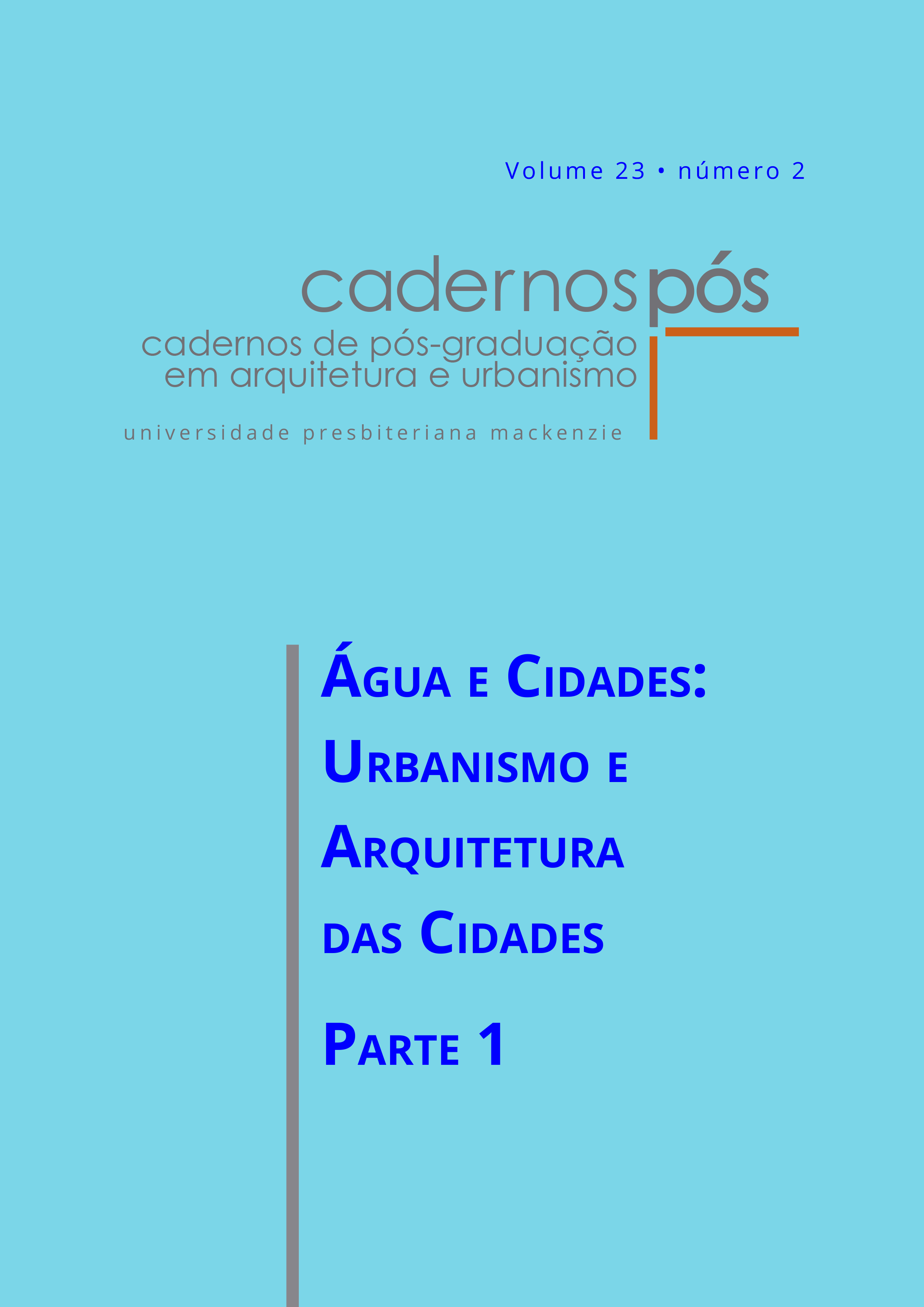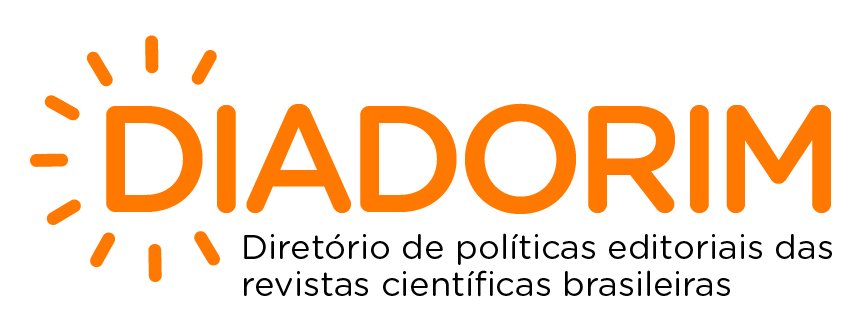Strategies for the economic and territorial regeneration of the Magdalena River
the case of the city of Girardot, Colombia
DOI:
https://doi.org/10.5935/cadernospos.v23n2p64-84Keywords:
River, Territory, Historical Heritage, Economic Development, Project StrategiesAbstract
The complexity of social and productive factors has changed the perspectives of urban centers. Although the first forms of territorial organization arose from human settlements and their need for subsistence within the special conditions provided by geography, in the last thirty years, this strategy does not seem enough to generate the permanence of populations and their development. Girardot, located on the banks of the Magdalena River, Colombia, was a reference of economic progress, being the second most important city in the country’s center in the first half of the twentieth century. The railroad, aviation, and the Magdalena River consolidated the city as the epicenter of local development. Despite having a strategic infrastructure of services, the new social dynamics derived from using the river brought a phenomenon of degradation, isolating the city from progress. This condition opens a perspective to delimit adequate management mechanisms, understanding that rivers were essential for consolidating large urban centers. The research addresses functionality, understood from the continuity of projects and plans in charge of governmental entities, which affect
the connectivity of these cities, promoting a vision of more sustainable ecosystems.
Downloads
References
ANDERSEN, A. Guide to public sector strategic planning. Chicago: Arthur Andersen & Co., 1984.
FAYAD ÁLVAREZ, A. Girardot: historias de un puerto y un tren − ciudad, economía y migración: 1905-1960. 2009. 196 f. Thesis (Master’s degree) − History. Universidad de Los Andes, 2009) − Universidad de Los Andes, Bogotá, D.C., 2009.
FERNÁNDEZ GÜELL, J. M. Planificación estratégica de ciudades: nuevos instrumentos y procesos. Barcelona: Editorial Reverté, 2006.
GAUSA, M. Multi-Barcelona hiper-Catalunya: estrategias para una nueva geo-urbanidad. Barcelona: Actar, 2009.
HUDAK, J.: Sorkin, L. D.; FERRIS, B. N. Strategies for cities and countries: a strategic planning guide, 1984. P. 58. IN FERNÁNDEZ GÜELL, J. M. Planificación estratégica de ciudades: nuevos instrumentos y procesos. Barcelona: Editorial Reverté, 2006.
LEY NACIONAL DE PATRIMONIO (Ley n. 1.437, de 2011. Disponible en: https://www.funcionpublica.gov.co/eva/gestornormativo/norma.php?i=41249. Acceso el: oct. 2023.
MCLOUGHLIN, B. Urban and regional planning: a systems approach, 1969. In: FERNÁNDEZ GÜELL, J. M. Planificación estratégica de ciudades: nuevos instrumentos y procesos. Barcelona: Editorial Reverté, 2006.
MINCULTURA (Ministerio de Cultura). Plan Especial de Manejo y Protección. Propuesta Integral. Documento Técnico de Soporte. Colombia, 2019. t. 2. Avaliable at: https://www.mincultura.gov.co/prensa/noticias/Documents/Patrimonio/PLAN%20ESTRATEGICO%20SECTORIAL%202019-2022%20-%20Cierre%202019.pdf. Access on: Sep. 2023.
MINCULTURA (Ministerio de Cultura). Resolución n. 1743, del 15 de septiembre de 2020. Por la cual se aprueba el Plan Especial de Manejo y Protección de la Plaza de Mercado de Girardot (Cundinamarca) declarada por el Decreto 1932 de 1993 como Monumento Nacional Hoy Bien de Interés Cultural del ámbito Nacional. Diario Oficial n. 51.632, Colombia, 30 Mar. 2021. Avaliable at: https://normograma.mincultura.gov.co/mincultura/compilacion/docs/resolucion_mincultura_1743_2020.htm. Access on: Sep. 2023.
MINTRANSPORTE/DNP (Ministerio de Transporte/Departamento Nacional de Planeación). Plan Maestro Fluvial de Colombia. Colombia: Arcadis, 2015.
MUSEO Nacional de Colombia. Río Magdalena: navegando por una nación. 2. ed. Colombia: Museo Nacional de Colombia/Instituto Colombiano de Antropología e Historia, 2010. 110 p.
ORTIZ GONZALEZ, M. F. Lineamientos para el desarrollo territorial urbano de las ciudades puerto fluvial sobre el Río Magdalena: aplicación puerto salgar. 2012. 124 f. Thesis (Master’s degree) − Regional and Urban Planning − Facultad de Arquitectura y Diseño, Pontificia Universidad Javeriana, Bogotá, D.C., 2012. https://doi.org/10.11144/Javeriana.10554.15645
PLAN ESPECIAL DE MANEJO Y PROTECCIÓN DE LA PLAZA DE MERCADO DE GIRARDOT (Cundinamarca) de la Ciudad de Girardot en Colombia (Resolución 1.743, del 15 de septiembre de 2020). Disponible en: https://mincultura.gov.co/ministerio/transparencia-y-acceso-a-informacionpublica/publicidad%20de%20proyectos%20de%20especificos%20de%20regulacion/ Documents/Resoluciones/2020/1743.pdf. Acceso el: oct. 2023.
RESTREPO ÁNGEL, J. Causas Naturales y Humanas de la Erosión en la Cuenca del Río Magdalena. Medelín, Colombia: Editorial EAFIT, 2015.
RESTREPO ÁNGEL, J. Los sedimentos del río Magdalena: reflejo de la crisis ambiental. Medelín, Colombia: Editorial EAFIT, 2005.
RODRÍGUEZ BECERRA, M. (ed.). ¿Para dónde va el Río Magdalena? Riesgos sociales, ambientales, y económicos del proyecto de navegabilidad. Colombia: Friedrich-Ebert-Stiftung/Foro Nacional Ambiental, 2015. Avaliable at: https://library.fes.de/pdf-files/bueros/kolumbien/12042.pdf. Access on: Sep. 2023.
VILARDY, S. Dinámicas complejas del Río Magdalena: Necesidad de un marco integral de gestión de la resiliencia ante el cambio climático. In: RODRÍGUEZ BECERRA, M. (ed.). ¿Para dónde va el Río Magdalena? Riesgos sociales, ambientales, y económicos del proyecto de navegabilidad. Colombia: Friedrich-Ebert-Stiftung/Foro Nacional Ambiental, 2015. p. 133-142. Avaliable at: https://library.fes.de/pdf-files/bueros/kolumbien/12042.pdf. Access on: Sep. 2023.
Downloads
Published
Versions
- 2023-12-20 (2)
- 2023-12-20 (1)
How to Cite
Issue
Section
License
Copyright (c) 2023 Carlos Andres Hernández Arriagada, Carolina Toro Salas

This work is licensed under a Creative Commons Attribution 4.0 International License.
Authors who publish in this journal agree to the following terms:
a) Authors retain the copyright and grant the journal the right of first publication, with the Project simultaneously licensed under the Creative Commons Attribution License that allows the sharing of the Project with recognition of the authorship and initial publication in this journal.
b) Authors are authorized to assume additional contracts separately for the non-exclusive distribution of the version of the Project published in this journal (e.g., publishing in an institutional repository or as a book chapter), indicating that it was originally published in this journal, with a link to the article.








 Todo o conteúdo de Cadernos de Pós-Graduação em Arquitetura e Urbanismo está licenciado sob
Todo o conteúdo de Cadernos de Pós-Graduação em Arquitetura e Urbanismo está licenciado sob 